Author Archive
I’m using Google Maps to plan summer family fun
by Katie Malczyk on Aug.11, 2020, under 3D Models, Argentina, Australia, Brazil, California, Denmark, England, Germany, Google Earth News, Google Earth Tips, Google Sky, Google maps, Hawaii, Indonesia, Ireland, Italy, Japan, Kenya, Mexico, Natural Landmarks, Netherlands, Sightseeing, Street Views, USA
Due to COVID-19, this is the summer for staycations and local day trips. In London, where my family and I live, we’re trying to figure out what that looks like for us. We have a toddler, so our ideal day trip is somewhere she can run around and we can have a picnic—and where the public restrooms have reopened (or, failing that, a discreet wooded area…).
So how do I find a destination that checks all our boxes? Here’s what’s worked.
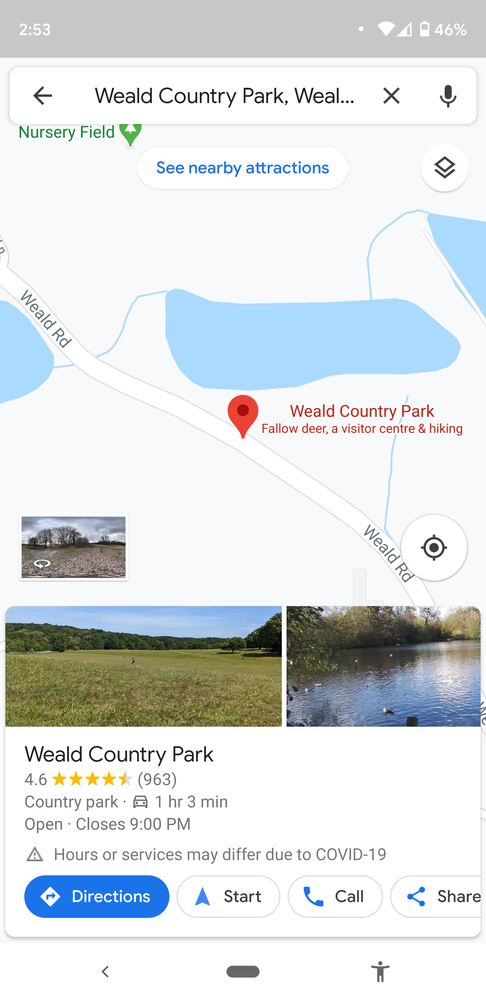
Meet at a fun halfway point
My cousin and her family live about a two-hour drive from us, and when lockdown lifted we were more than ready to meet up. But instead of driving all the way to them—a four-hour round trip is a struggle for even the most patient of toddlers—we had the idea to meet up at a halfway point.
But how do you find that halfway point? That space between us was a no-man’s land where neither of us knew of any parks or nature reserves or anywhere that would be suitable for two energetic toddlers. So I used Google Maps to find the rough halfway point. Then I filtered by “Attractions” (you can also choose “Parks” or “Restaurants” or other categories) to see what came up. I quickly landed on Weald Country Park, which boasts a 4.5-star rating, almost a thousand reviews and a promising description: “Fallow deer, a visitor center & hiking.”
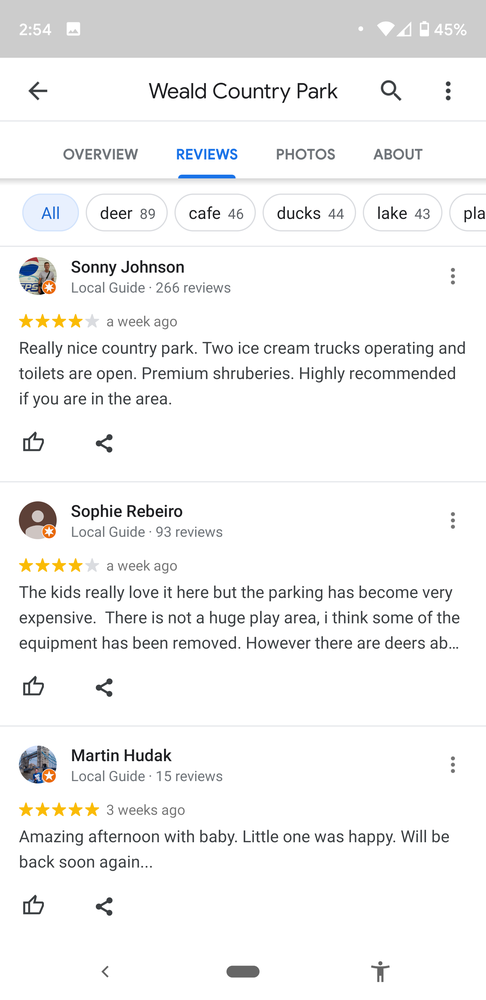
Read the reviews
Deer-watching had the potential to keep toddlers occupied for at least one minute. A visitor center indicated parking and bathrooms. And hiking probably meant that picnicking was easily an option. But to double-check these critical questions, I relied on the kindness of strangers who had posted recent reviews and ratings. Local Guides and other people who contribute to Google Maps are very helpful in offering information about how much they liked (or didn’t like) their trip, and many of them have the same topics on their mind that I do. Since you can sort reviews by date, it was easy to see the most relevant ones—i.e., those that have been filed since lockdown lifted—for current info on toilets (yes), parking (yes, but it’s expensive), and whether the playgrounds have reopened (yes, very recently).
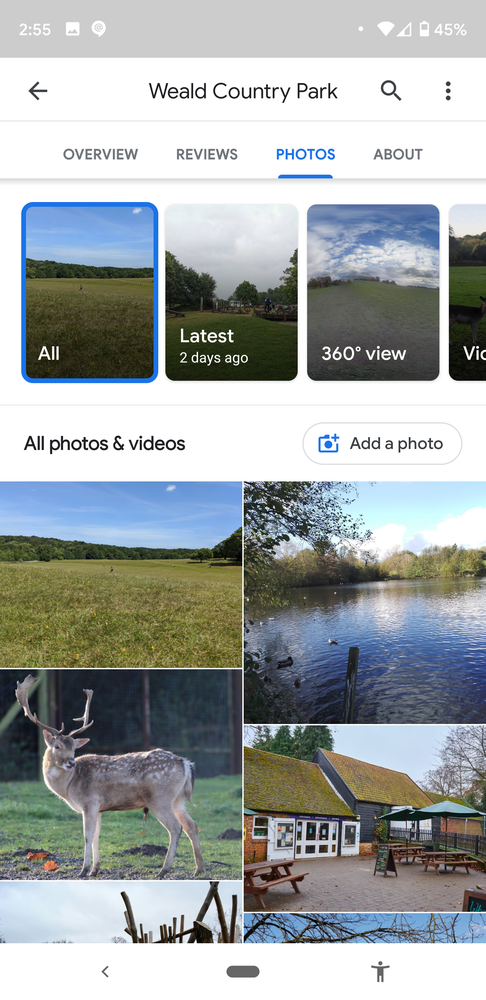
Browse the photos and Street View
To really get a feel for a place, sometimes there’s no replacement for a photo. Happily, many Google Maps contributors feel the same way, so it’s often very easy to find recent photos of the places you’re thinking of visiting. And for a 360-degree panorama, I can drop the pin and check out the scene on Street View. I soon discovered that, in addition to deer, Weald Country Park is home to cows and ducks, making it more or less heaven on earth for two two-year-olds.
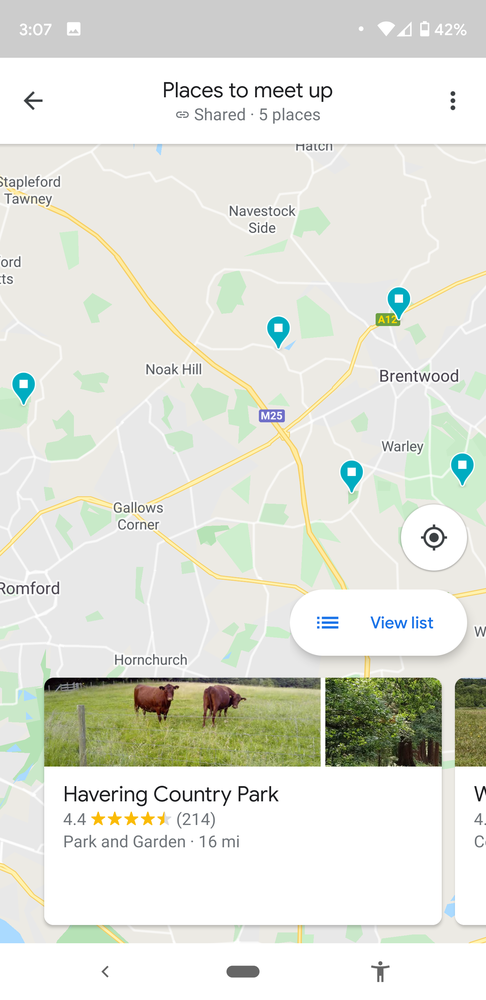
Save places and make lists
I know that we’ll want to meet up with my cousin’s family again soon, and there were a few other nearby nature reserves that looked equally promising. So I tapped the “Save” button to start a list I could refer back to. I can even share it with my cousin so we can work on the list together. Google Maps puts a pin in them too, so the next time I’m scouting the area I’ll see little flags helpfully highlighting them for me.
Contribute your own review
If you found someone’s review or photos helpful, why not pay it forward by posting your own? If you’ve found information that needs updating, like a store’s opening hours, or if you want to let people know how your experience of a place matched up to expectations, click on the Contribute button at the bottom of the screen on the Google Maps app and share your knowledge.
Street View is helping this tour guide stay in business
by Katie Malczyk on Apr.24, 2020, under 3D Models, Argentina, Australia, Brazil, California, Denmark, England, Germany, Google Earth News, Google Earth Tips, Google Sky, Google maps, Hawaii, Indonesia, Ireland, Italy, Japan, Kenya, Mexico, Natural Landmarks, Netherlands, Sightseeing, Street Views, USA
On March 24, government restrictions due to COVID-19 went into effect across the United Kingdom. With nonessential businesses forced to close, public gatherings banned, and most people required to stay at home, these regulations instantly transformed daily life. They also presented a serious threat to Katie Wignall’s business: Katie makes her living as a tour guide, showing curious visitors the highlights of London.
But instead of trying to simply wait out the crisis, Katie looked to technology for a solution to creatively keep her business going. We chatted with her to find out how she’s successfully managed to take her walking tours virtual.
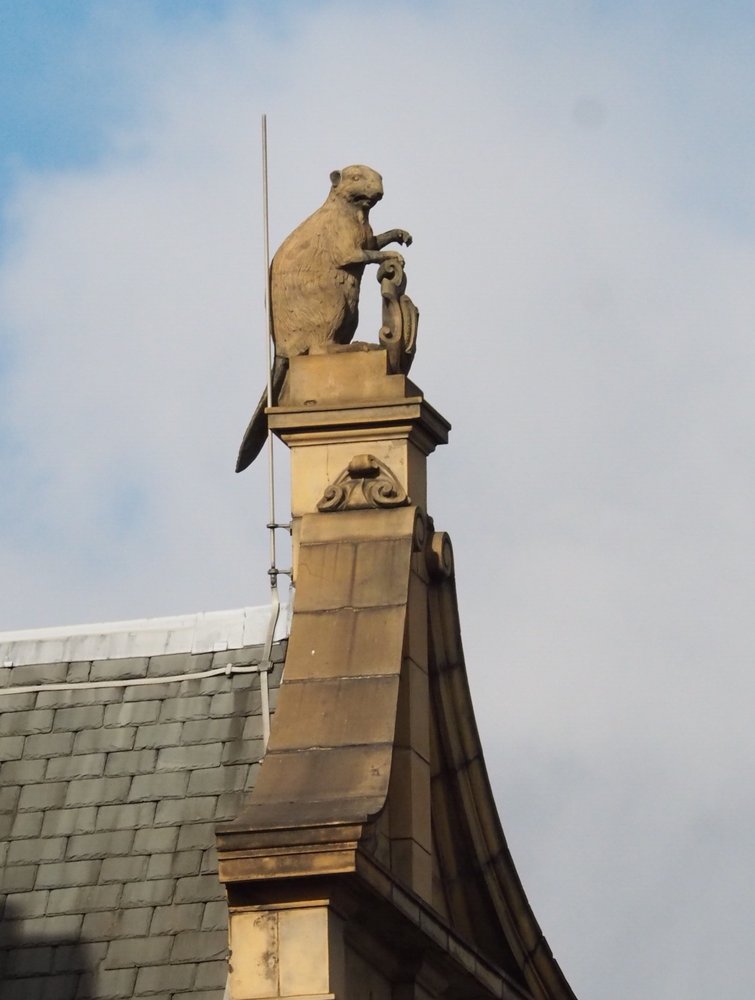
One of the beaver statues on Oxford Street
Describe your business, Look Up London.
I provide walking tours all over London for public and private groups. I’m a Blue Badge Tourist Guide, which is the top accreditation for tourist guides in the UK. We do two years of training, pass 11 exams, and we’re the only guides that can take you inside the Tower of London and Westminster Abbey.
Look Up London started originally as a blog and social media channels, where I shared quirkier bits of London history. The name is all about spotting the little details in the architecture around you, to tell the story of why something looks the way it does. For example, on Oxford Street, which is famous for its shopping, there's a building decorated with sculptures of beavers. They're a clue to the fact it used to be a hat factory—slightly gruesome, but a detail that is so often missed by passersby!
How has your business been impacted by COVID-19 and the government restrictions?
I’ve had to shut down, basically. I can’t go out; we’re not able to meet up in groups to deliver the normal tours. All of the work I had booked going into the summer—the busiest time—has just been cancelled or postponed. Literally overnight there was no work at all.
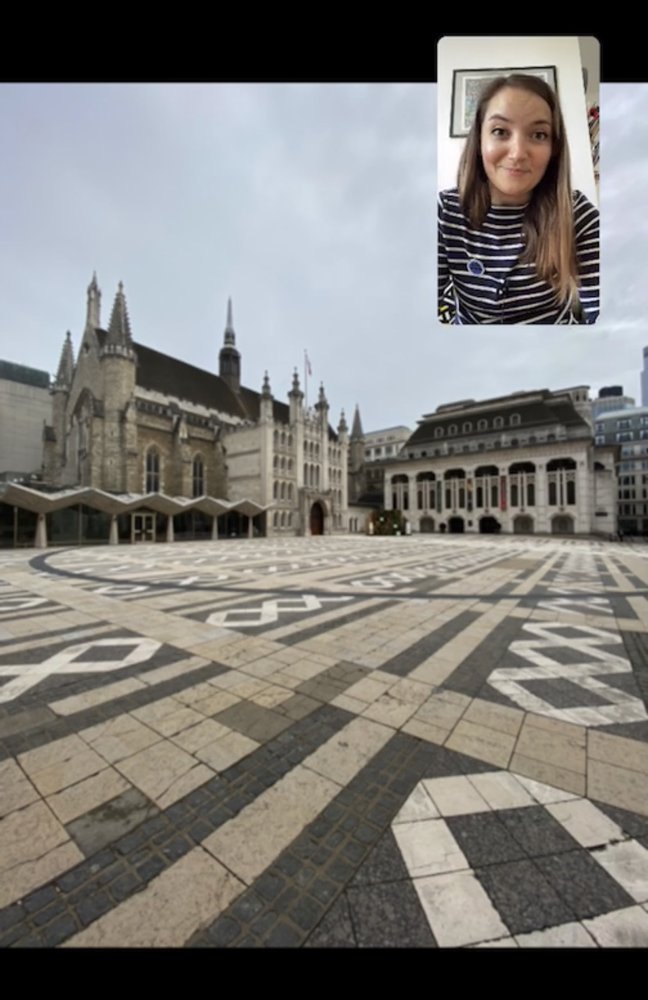
Katie giving a tour of the Guildhall
What gave you the idea for virtual tours?
It was actually a suggestion from a follower on Instagram who asked, “Is there a way you could do virtual tours?” I started out by going out myself and having my husband film me on London streets, but then as the situation escalated, we weren’t allowed outside.
So then I thought I’d experiment with Google Street View. If I couldn’t go outside, I could offer people the next best thing, through a screen. I was already using Street View a lot for my work—it’s really good for my research. I love the feature where you can go back in time. It’s not possible for every location, but for a lot of central London, you can select a place in Google Maps for desktop, drag the Street View pegman into the picture and click on the clock in the top left corner to explore imagery from the past. You can see where buildings have been demolished and what used to be standing where.
So now, every Monday, Wednesday and Friday at 2 PM London time, I use Street View to give a virtual tour on Instagram Live. And for anyone who can’t make that time, I post the recordings on my website. They’re all free, and if people enjoy them, they can make a donation.What’s been the response?
People have been so lovely. From the comments, I think it’s been very helpful for people in lockdown, who maybe are older and can’t get out of the house as often, or people who’ve had to leave London and are feeling homesick. Lots have messaged me to say it’s made them feel like they’ve been outside. They’ve really learned something new and taken their minds off the situation for twenty minutes or so.
Any advantages to using Street View compared to being there in person?
The great thing about Street View is that you can hop about—you can jump a mile down the road and people don’t have to get on a bus or actually walk, so you can cover a lot of ground.
And then there’s that feature to go back in time and see things how they appeared years ago, back to 2008. On a normal tour, you can show pictures and give people an idea, but if people are on Street View and feel like they’re standing in a space and seeing the changes right there, it’s a different experience.
One example, on my Aldgate tour, is a garden space that has been relandscaped. The garden looks beautiful now, but three years ago you could see the cobbles of Victorian London. And those cobbles happen to have been the site of the murder of Catherine Eddowes, who was a victim of Jack the Ripper. That was an evocative thing to be able to show.
Any advice for other small business owners who are trying to figure out how to adapt right now?
I think you have to do the thing that you enjoy doing. I don’t think I’d be able to do these three times a week if I didn’t enjoy them. If you have something that you want to share, there’s no reason you shouldn’t do that. Technology has made everything so accessible, and if you care about something, chances are others care about that as well.
Street View is helping this tour guide stay in business
by Katie Malczyk on Apr.24, 2020, under 3D Models, Argentina, Australia, Brazil, California, Denmark, England, Germany, Google Earth News, Google Earth Tips, Google Sky, Google maps, Hawaii, Indonesia, Ireland, Italy, Japan, Kenya, Mexico, Natural Landmarks, Netherlands, Sightseeing, Street Views, USA
On March 24, government restrictions due to COVID-19 went into effect across the United Kingdom. With nonessential businesses forced to close, public gatherings banned, and most people required to stay at home, these regulations instantly transformed daily life. They also presented a serious threat to Katie Wignall’s business: Katie makes her living as a tour guide, showing curious visitors the highlights of London.
But instead of trying to simply wait out the crisis, Katie looked to technology for a solution to creatively keep her business going. We chatted with her to find out how she’s successfully managed to take her walking tours virtual.

One of the beaver statues on Oxford Street
Describe your business, Look Up London.
I provide walking tours all over London for public and private groups. I’m a Blue Badge Tourist Guide, which is the top accreditation for tourist guides in the UK. We do two years of training, pass 11 exams, and we’re the only guides that can take you inside the Tower of London and Westminster Abbey.
Look Up London started originally as a blog and social media channels, where I shared quirkier bits of London history. The name is all about spotting the little details in the architecture around you, to tell the story of why something looks the way it does. For example, on Oxford Street, which is famous for its shopping, there's a building decorated with sculptures of beavers. They're a clue to the fact it used to be a hat factory—slightly gruesome, but a detail that is so often missed by passersby!
How has your business been impacted by COVID-19 and the government restrictions?
I’ve had to shut down, basically. I can’t go out; we’re not able to meet up in groups to deliver the normal tours. All of the work I had booked going into the summer—the busiest time—has just been cancelled or postponed. Literally overnight there was no work at all.

Katie giving a tour of the Guildhall
What gave you the idea for virtual tours?
It was actually a suggestion from a follower on Instagram who asked, “Is there a way you could do virtual tours?” I started out by going out myself and having my husband film me on London streets, but then as the situation escalated, we weren’t allowed outside.
So then I thought I’d experiment with Google Street View. If I couldn’t go outside, I could offer people the next best thing, through a screen. I was already using Street View a lot for my work—it’s really good for my research. I love the feature where you can go back in time. It’s not possible for every location, but for a lot of central London, you can select a place in Google Maps for desktop, drag the Street View pegman into the picture and click on the clock in the top left corner to explore imagery from the past. You can see where buildings have been demolished and what used to be standing where.
So now, every Monday, Wednesday and Friday at 2 PM London time, I use Street View to give a virtual tour on Instagram Live. And for anyone who can’t make that time, I post the recordings on my website. They’re all free, and if people enjoy them, they can make a donation.What’s been the response?
People have been so lovely. From the comments, I think it’s been very helpful for people in lockdown, who maybe are older and can’t get out of the house as often, or people who’ve had to leave London and are feeling homesick. Lots have messaged me to say it’s made them feel like they’ve been outside. They’ve really learned something new and taken their minds off the situation for twenty minutes or so.
Any advantages to using Street View compared to being there in person?
The great thing about Street View is that you can hop about—you can jump a mile down the road and people don’t have to get on a bus or actually walk, so you can cover a lot of ground.
And then there’s that feature to go back in time and see things how they appeared years ago, back to 2008. On a normal tour, you can show pictures and give people an idea, but if people are on Street View and feel like they’re standing in a space and seeing the changes right there, it’s a different experience.
One example, on my Aldgate tour, is a garden space that has been relandscaped. The garden looks beautiful now, but three years ago you could see the cobbles of Victorian London. And those cobbles happen to have been the site of the murder of Catherine Eddowes, who was a victim of Jack the Ripper. That was an evocative thing to be able to show.
Any advice for other small business owners who are trying to figure out how to adapt right now?
I think you have to do the thing that you enjoy doing. I don’t think I’d be able to do these three times a week if I didn’t enjoy them. If you have something that you want to share, there’s no reason you shouldn’t do that. Technology has made everything so accessible, and if you care about something, chances are others care about that as well.
Let Google be your holiday travel tour guide
by Katie Malczyk on Dec.13, 2019, under 3D Models, Argentina, Australia, Brazil, California, Denmark, England, Germany, Google Earth News, Google Earth Tips, Google Sky, Google maps, Hawaii, Indonesia, Ireland, Italy, Japan, Kenya, Mexico, Natural Landmarks, Netherlands, Sightseeing, Street Views, USA
When it comes to travel, I’m a planner. I’m content to spend weeks preparing the perfect holiday getaway: deciding on the ideal destination, finding the cheapest flights and sniffing out the best accommodations. I’ve been dreaming about a trip to Greece next year, and—true story—I’ve already got a spreadsheet to compare potential destinations, organized by flight length and hotel perks.
But the thing I don’t like to do is plot out the nitty-gritty details. I want to visit the important museums and landmarks, but I don’t want to write up a daily itinerary ahead of time. I’m a vegetarian, so I need to find veggie-friendly restaurants, but I’d prefer to stumble upon a good local spot than plan in advance. And, since I don’t speak Greek, I want to be able to navigate transportation options without having to stop and ask people for help all the time.
So I’ve come to rely on some useful Google tools to make my trips work for the way I like to travel. Here’s what I’ve learned so far.
Let Maps do the talking
Getting dropped into a new city is disorienting, and all the more so when you need to ask for help but don’t know how to pronounce the name of the place you’re trying to get to. Google Maps now has a fix for this: When you’ve got a place name up in Maps, just press the new little speaker button next to it, and it will speak out a place's name and address in the local lingo. And if you want to continue the conversation, Google Maps will quickly link you to the Google Translate app.
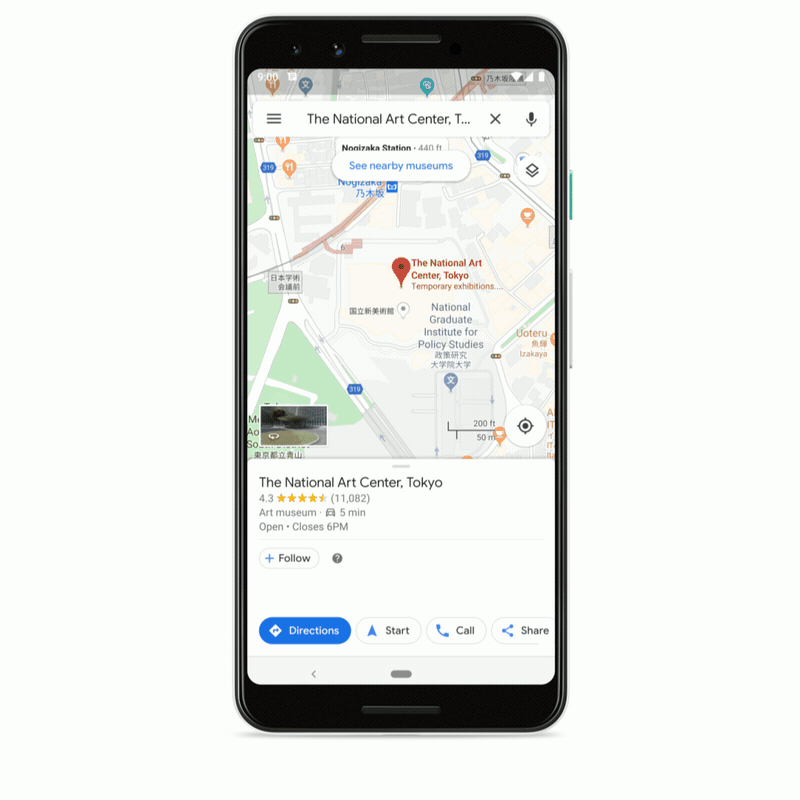
Let your phone be your guidebook
New cities are full of new buildings, new foods and even new foliage. But I don’t want to just see these things; I want to learn more about them. That’s where Google Lens comes in as my know-it-all tour guide and interpreter. It can translate a menu, tell me about the landmark I’m standing in front of or identify a tree I’ve never seen before. So whenever I think, “I wonder what that building is for,” I can just use my camera to get an answer in real time.
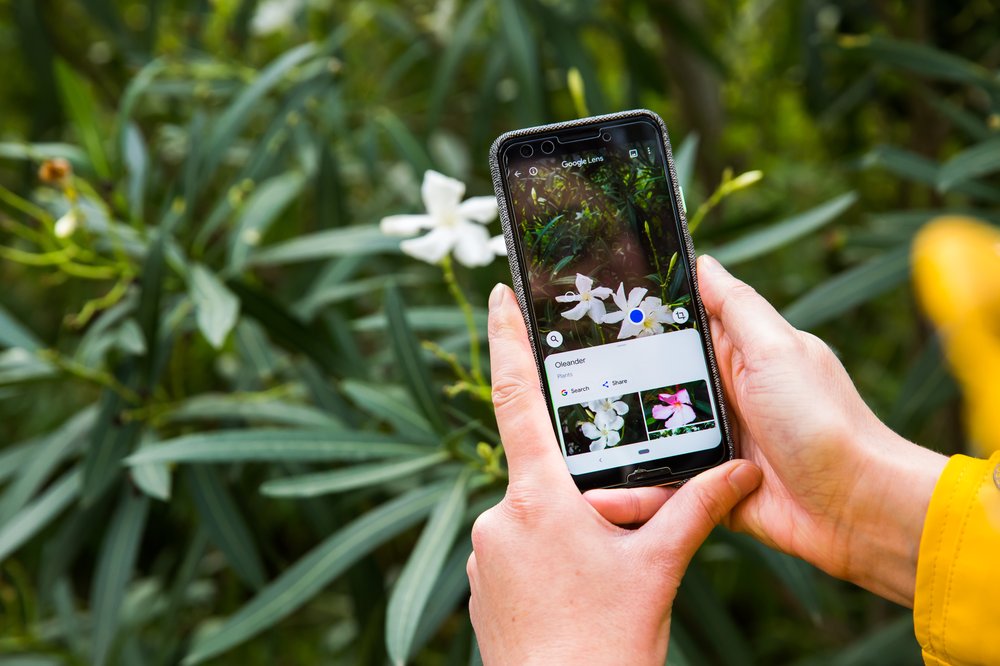
Photo credit: Joao Nogueira
Get translation help on the go
The Google Assistant’s real-time translation feature, interpreter mode, is now available on Android and iOS phones worldwide, enabling you to have a conversation with someone speaking a foreign language. So if I say, “Hey Google, be my Greek translator,” I can easily communicate with, say, a restaurant server who doesn’t speak English. Interpreter mode works across 44 languages, and it features different ways to communicate suited to your situation: you can type using a keyboard for quiet environments, or manually select what language to speak.
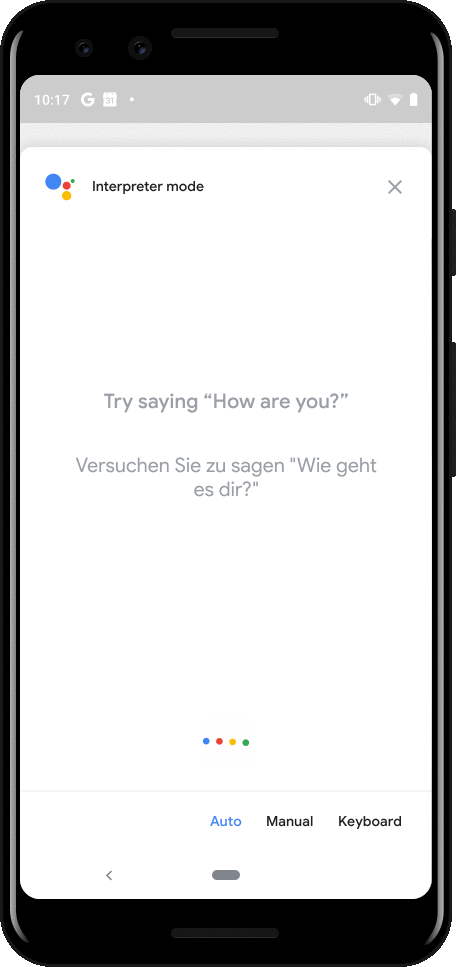
Use your voice to get things done
Typing is fine, but talking is easier, especially when I’m on vacation and want to make everything as simple as possible. The Google Assistant makes it faster to find what I’m looking for and plan what’s next, like weather forecasts, reminders and wake-up alarms. It can also help me with conversions, like “Hey Google, how much is 20 Euros in pounds?”
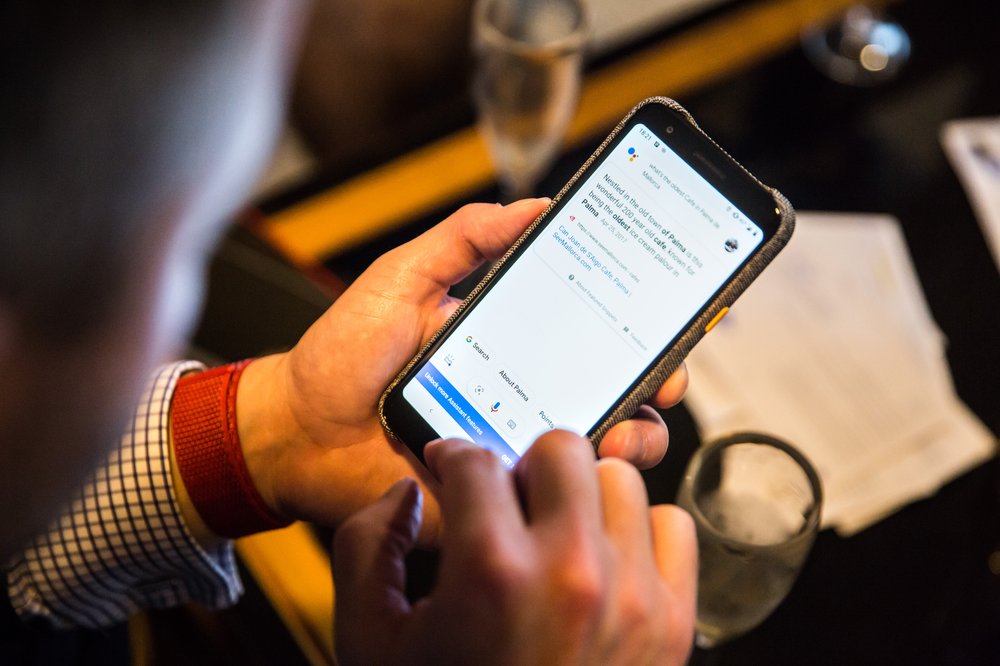
Photo credit: Joao Nogueira
Take pics, then chill
When I’m in a new place, my camera is always out. But sorting through all those pictures is the opposite of relaxing. So I offload that work onto Google Photos: It backs up my photos for free and lets me search for things in them . And when I want to see all the photos my partner has taken, I can create an album that we can both add photos to. And Photos will remind me of our vacation in the future, too, with story-style highlights at the top of the app.
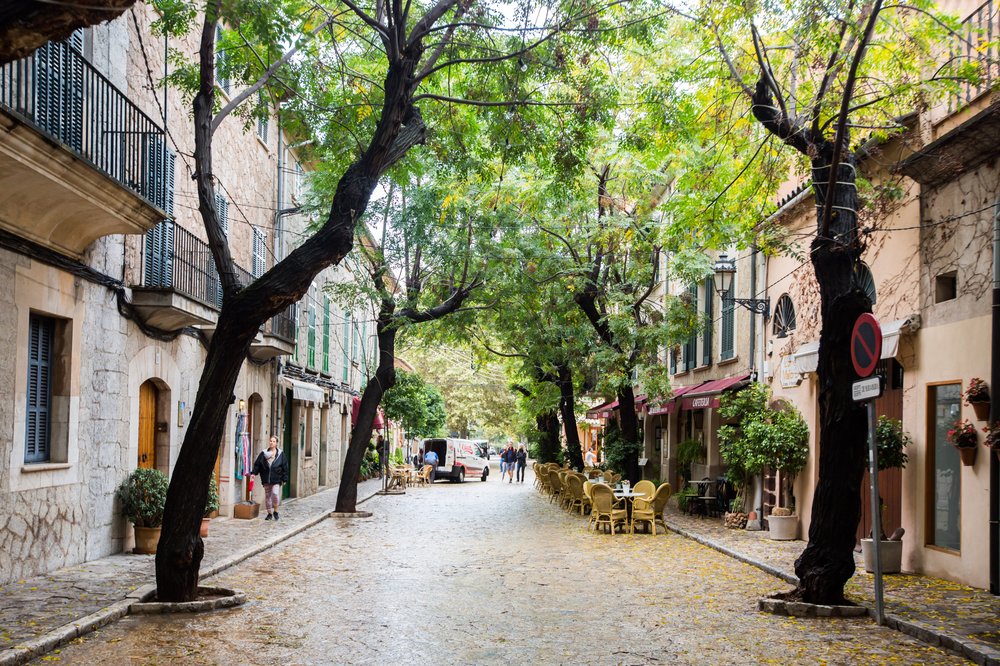
Photo credit: Joao Nogueira
Look up
I live in a big city, which means I don’t get to see the stars much. Traveling somewhere a little less built up means I can hone my Pixel 4 astrophotography skills. It’s easy to use something stable, like a wall, as a makeshift tripod, and then just let the camera do its thing.
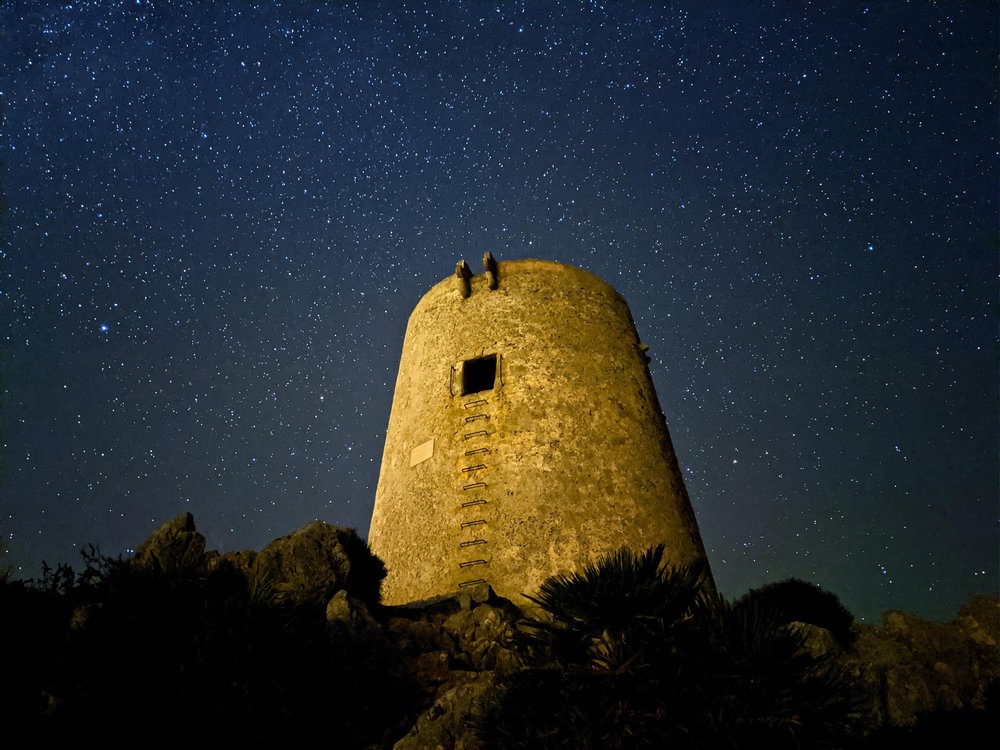
Photo credit: DDay
Vacation unplugged
As useful as my phone is, I try to be mindful about putting it down and ignoring it as much as I can. And that goes double for when I’m on vacation. Android phones have a whole assortment of Digital Wellbeing features to help you disconnect. My favorite is definitely flip to shhh: Just place your phone screen-side down and it silences notifications until you pick it back up.
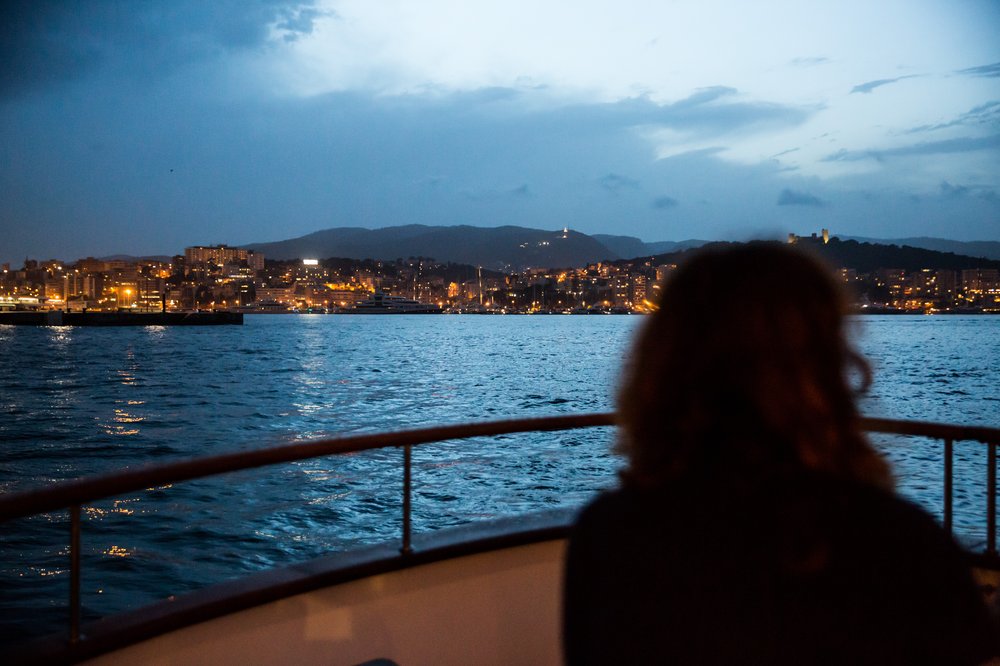
Photo credit: Joao Nogueira
Get into the holiday spirit with Google
Here's how Google products can help this holiday season.